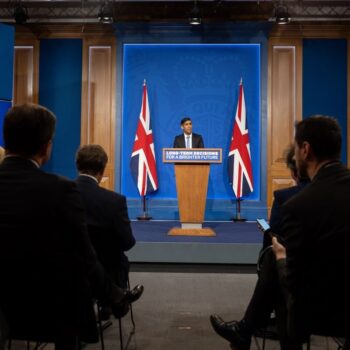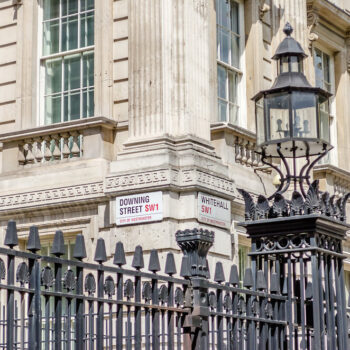With the UK’s climate watchdog recently lambasting the Government’s poor track record on energy efficiency investment and the National Infrastructure Commission including energy efficiency in its long-awaited infrastructure investment recommendations to be published tomorrow, energy and climate policy is again at a crossroads. Will the Government listen and deliver cleaner and smarter infrastructure investment?
Energy efficiency is of central importance in meeting a raft of the UK’s infrastructure demands, as well as its climate targets. Ambitious energy efficiency implementation minimises the cost and maximises the benefits of decarbonisation. It addresses fuel poverty, enhances productivity and competitiveness, creates and supports quality jobs, improves energy security and boosts GDP, and can render potential ‘white elephant’ investments on the supply side unnecessary.
Energy efficiency’s track record speaks for itself. In homes, gas and electricity demand has fallen by 21% and 13% respectively since the peak of 2004. This despite there being over 2m more households, higher indoor temperatures, and more lamps and appliances in each home. Thanks to insulation, efficient boilers and appliances, energy bills were £500 lower in 2017 than they would have been without energy efficiency improvements since 2004. With residential energy efficiency policy having slowed to a crawl in 2015, and the rate of insulation down 95% compared to 2012, there is now a real risk that these trends reverse. This risk must be overcome, and energy efficiency’s enormous remaining potential – which could slash household energy demand by 50% – realised.
Given energy efficiency’s central importance, the Government’s ambition for home energy renovation in its Clean Growth Strategy – for all homes to achieve an Energy Performance Certificate rating of C (on the A to G scale) by 2035 – is a good start. However, policy and investment to achieve it is severely lacking. The annual investment needed from public and private sources to 2035 is £5.2 billion. Public investment in 2017/18 was £0.7 billion. This draws in little to no private investment and there are no plans to change this amount or the way in which it is invested, leaving an annual gap of £4.5 billion.
Thought and practice on how to effectively drive greater demand for energy efficient renovation – including by harnessing the £27.6 billion market for housing repair and maintenance – is well established and needs to be acted on in the UK. In a new report out today, case studies of peer countries France, Germany and the Netherlands – and a case study of Scotland owing to its own advanced approach – demonstrate combinations of policies and public investment that are far more effective at raising renovation rates and unlocking more private investment.
Considering the UK has substantial energy efficiency policy capability and experience spanning decades, these case studies inspire the belief that the UK must be capable of doing better. But it will require a greater commitment of public capital investment and better-organised delivery to achieve.
Now is an important time to capitalise on momentum for greater ambition. Some incremental policy steps are being taken by Government following the Clean Growth Strategy’s publication last October. In March, the retail finance sector, through the Green Finance Taskforce, made strong recommendations to Government that would enable it to mainstream the financing of home energy improvements.
Crucially, the National Infrastructure Commission, having established energy efficiency as one of its priorities, has a unique opportunity to make big picture recommendations for greater energy efficiency investment as part of its first five-yearly National Infrastructure Assessment to be published on July 10.
It must inspire Government to follow up with a more coherent and ambitious approach that treats energy efficiency as a national infrastructure priority and weaves in those steps the Government is already taking, including in response to the Green Finance Taskforce’s work. This encompasses:
- Confirming energy efficiency as a national infrastructure priority, with clear governance arrangements, targets, a long-term action plan and funding, as in Scotland
- Additional public capital investment of £1 billion per year to 2035 – much of it supporting low income households – that can help unlock £3.5 billion of private investment, closing the £4.5 billion gap
- Adequate incentives for ‘able to pay’ homeowners and landlords, such as lower Stamp Duty for more energy efficient homes and 0% interest loans
- Robust regulation, strengthening over time towards an EPC rating of C, that requires some homeowners to take action and inspires others to plan and invest for the future
- A long-term approach to delivery in which local authorities play a core role in tackling fuel poverty, creating demand and growing local supply chains
- Strong advice provision and quality assurance and safety standards.
The prize, aside from meeting our climate targets in the most cost-effective way? Everyone gets to live in a safer, more comfortable home that is cheaper to run: quintessentially ‘no regrets’.
Download the report accompanying this article: Silver buckshots? Opportunities for closing the gap between ambition for, and policy and investment to drive, UK residential energy efficiency renovation
View the case studies:
| France | Germany |
 |
 |
| Netherlands | Scotland |
 |
 |
This article first appeared on Bright Blue, an independent think tank and pressure group for liberal conservatism. Image: "Scaffolding" (CC BY-ND 2.0) by Max Klingensmith


